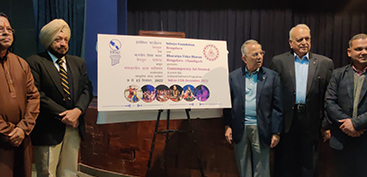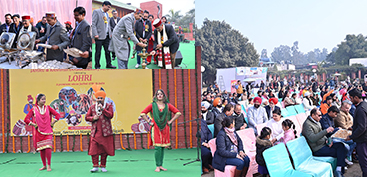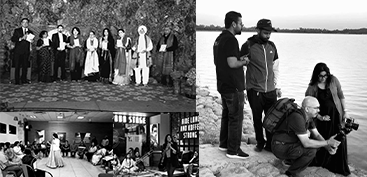There are many benefits that accrue from the holy cow, considered to be sacred in Hindu culture. Mankind has witnessed its usefulness for ages.
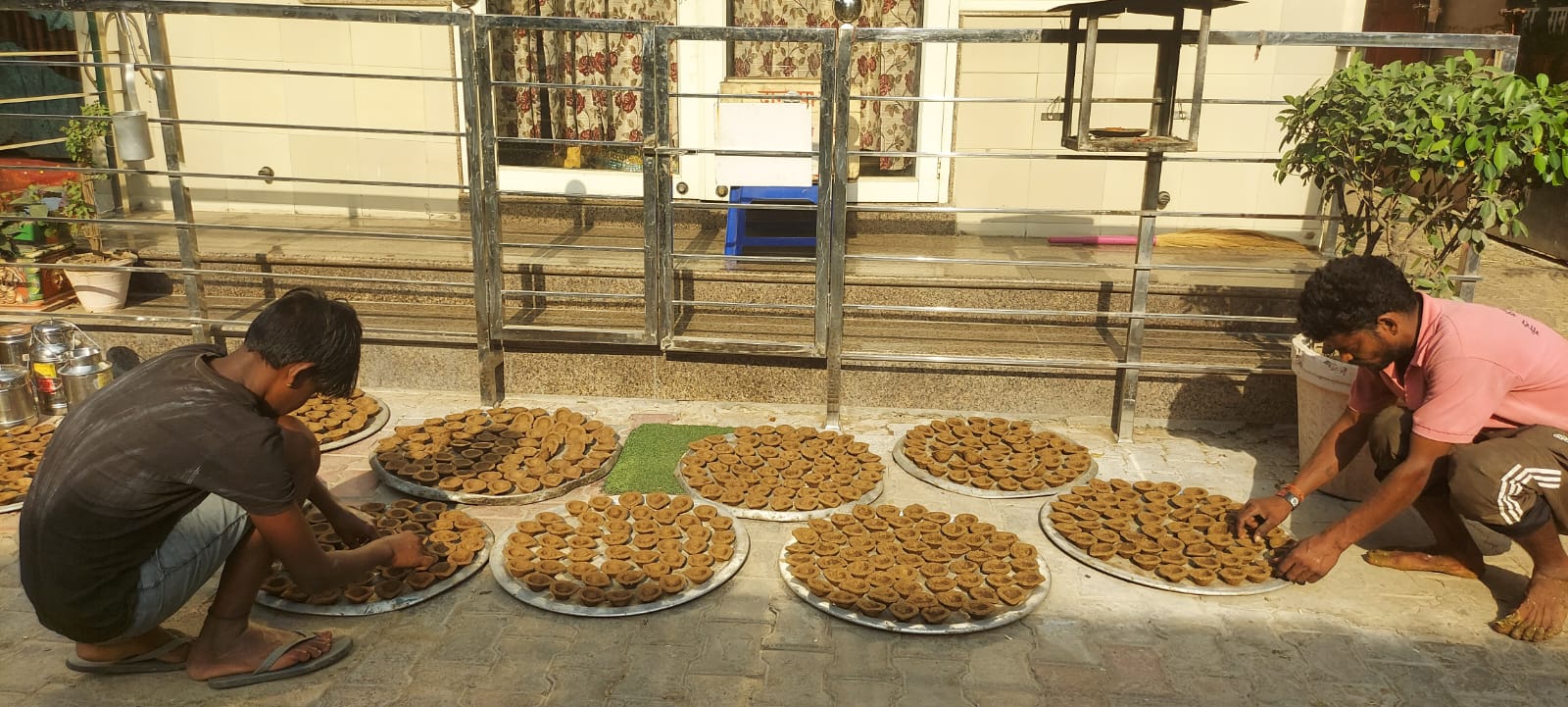
An NGO, Chandigarh Gauri Shankar Seva Dal, has reinvented a means of bringing back Indian rural feel into our modern homes. The Gaushala at Sector 45 is providing organic diyas made from cow dung mixed with organic ingredients like havan samagri, gugul, jatamassi, pilli sarson and loban, and that too free of cost.
How do these cowdung diyas work
The diya will sustain the cotton flame for about 15-20 minutes. After the flame gets extinguished and the oil has been used up, it will start disintegrating slowly and turn into ash.
How are they useful
You can mix the remaining ash in the soil in potted plants which will serve as a manure.
The ash can also be mixed with laung and elaichi and burnt like a ‘dhooni’. The fumes arising out of it serve as a disinfectant and spread positive energy.
Besides, the ash can be collected and used to clean utensils as was done in olden times in villages.
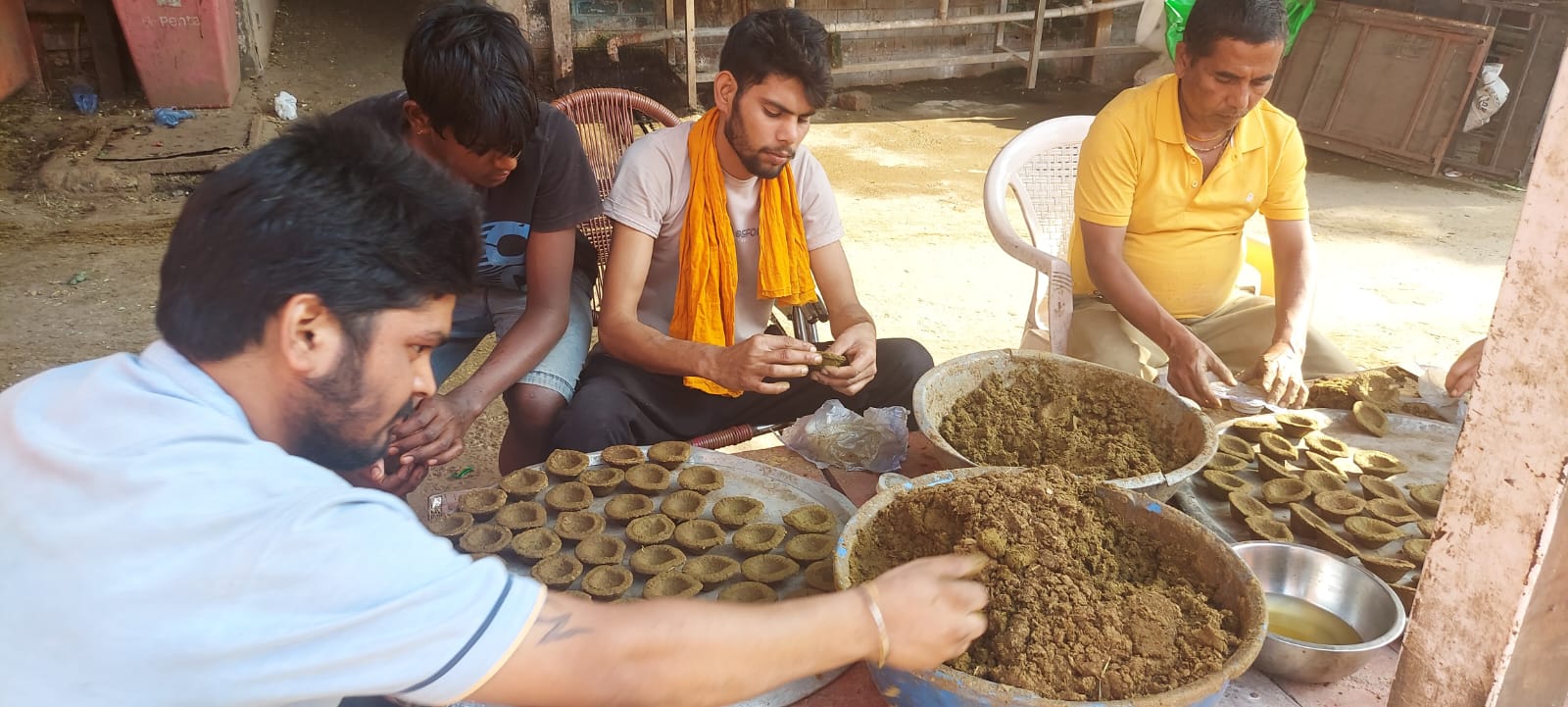
“Our target for this year (2022) is to make 75,000-80,000, ” says Sumit Sharma, Chairman, Chandigarh Gauri Shankar Seva Dal.
These organic diyas are only being made at the Sector 45 gaushala. There are six gaushalas in Chandigarh alone. “The other gaushalas should also start this initiative so that Diwali becomes eco-friendly for everyone,” suggests Sumit Sharma, Chairman, Chandigarh Gauri Shankar Seva Dal, who has been associated with this gaushala for the last 10 years. “A few years back we had gone to a gaushala in Gujarat and we saw them making these cowdung diyas , we learnt how to make them and then started making them here in Chandigarh,” says Sumit.
How are they made
The moist cowdung is mixed with other ingredients havan samagri, gugul, jatamassi, pilli sarson and loban, then they are kept in the sun to dry for about 2 days, and they are ready.
The other conventional earthen lamps or diyas are exposed to heat to make them ‘pucca’, that is why they do not disintegrate like cowdung diyas.
Where will you get them
Gaushala, Near Sector 44-C, 45-D, 51 & 50 Traffic Lights, Chandigarh Model Jail Road, Sector 45-D
Chandigarh – 160 047
When will they be available: Dhanteras till Diwali
Cost: Free
USP: eco-friendly
Precaution: do not keep it over a wooden structure, it may burn, keep it on a concrete structure
“Goddess Lakshmi resides in cow dung. It is an effort on our part to keep Hindu traditions alive in a modern way. People no longer use cowdung in cemented houses. Yes, those who believe in Hindu traditions and rituals have another medium of getting goddess Lakshmi into their houses,” says Ramesh Kumar Sharma, President, Chandigarh Gauri Shankar Seva Dal.
The NGO has been making these organic diyas for the last over five years. “There has been amazing response from the city residents,” he says.
Though, the social and medical benefits have slowly been losing its sheen due to the constant urbanization and modernization that has been taking place.
In olden times, the cow was the most important resource even when it came to keeping the house neat and clean and hygienic. The walls of mud houses were plastered with mixture of cow dung with dry straws from fields with the onset of any auspicious festival or occasion. And it entailed hard labour too, women were generally assigned this responsibility who did it laboriously and with all love and dedication.







